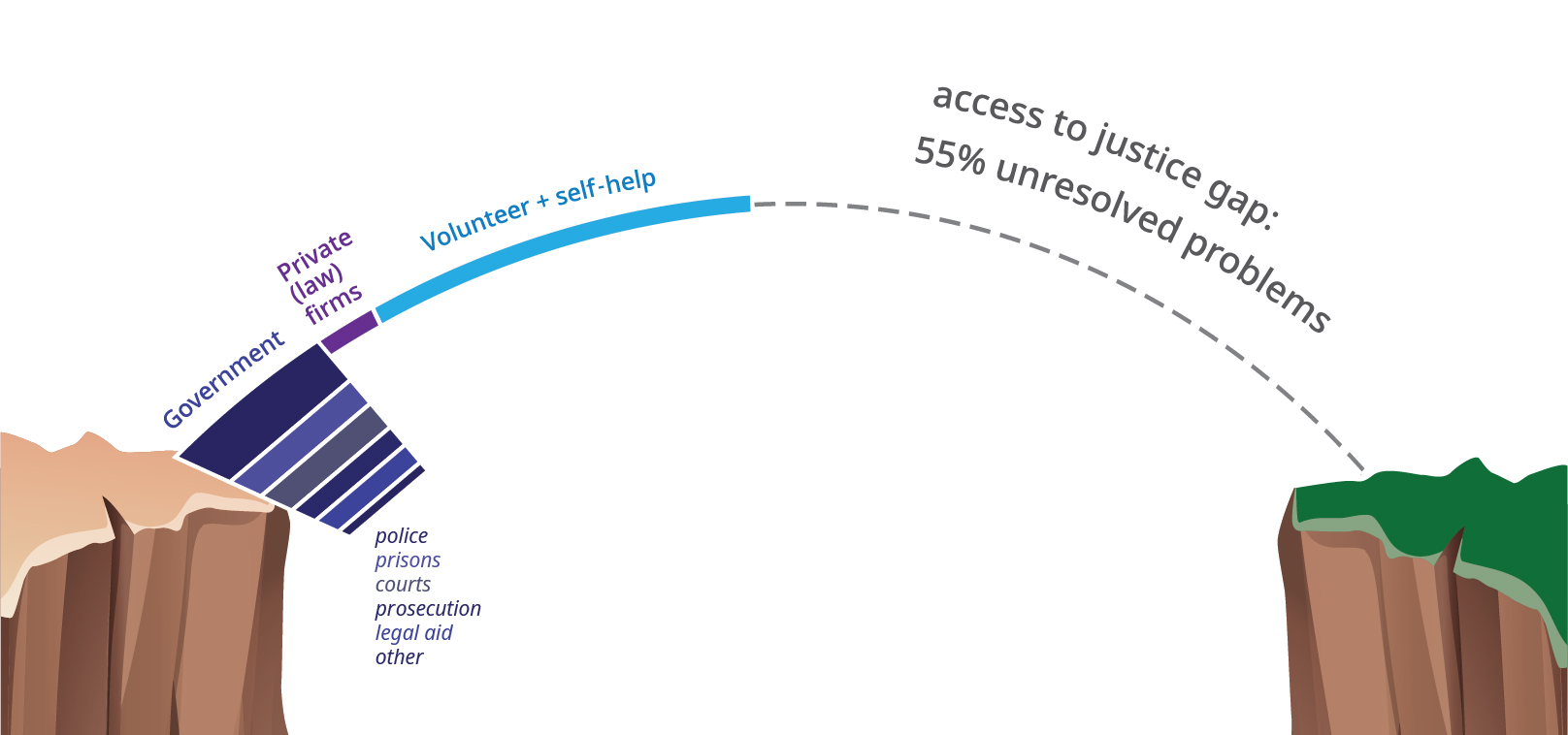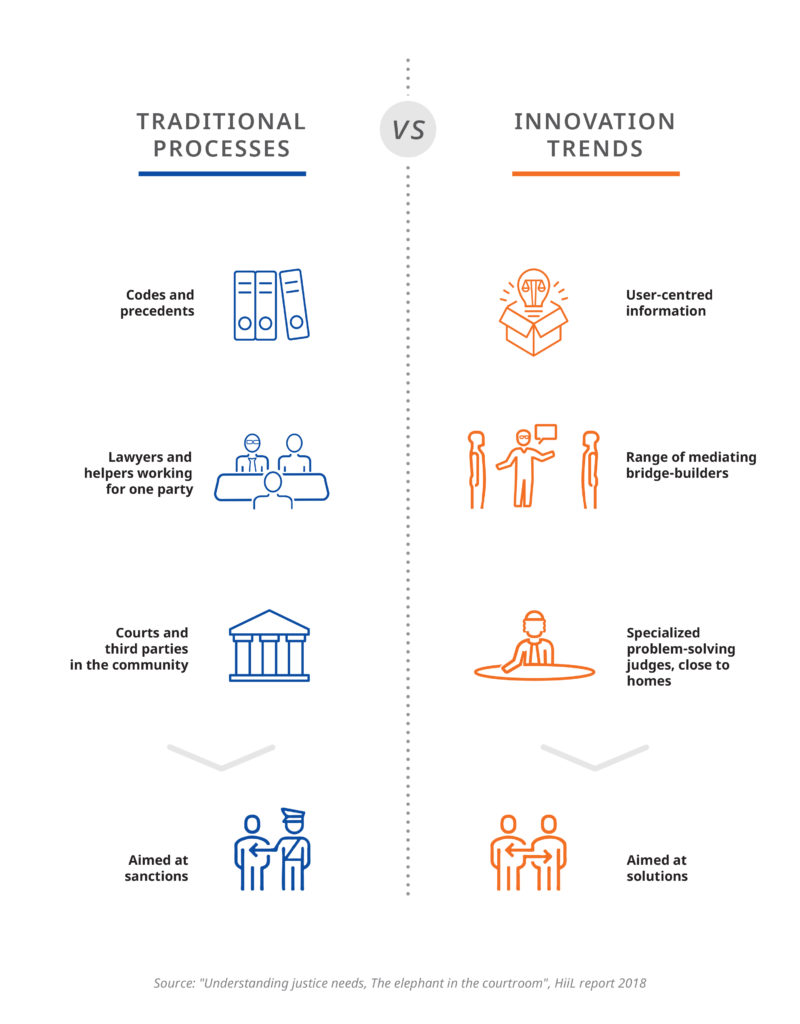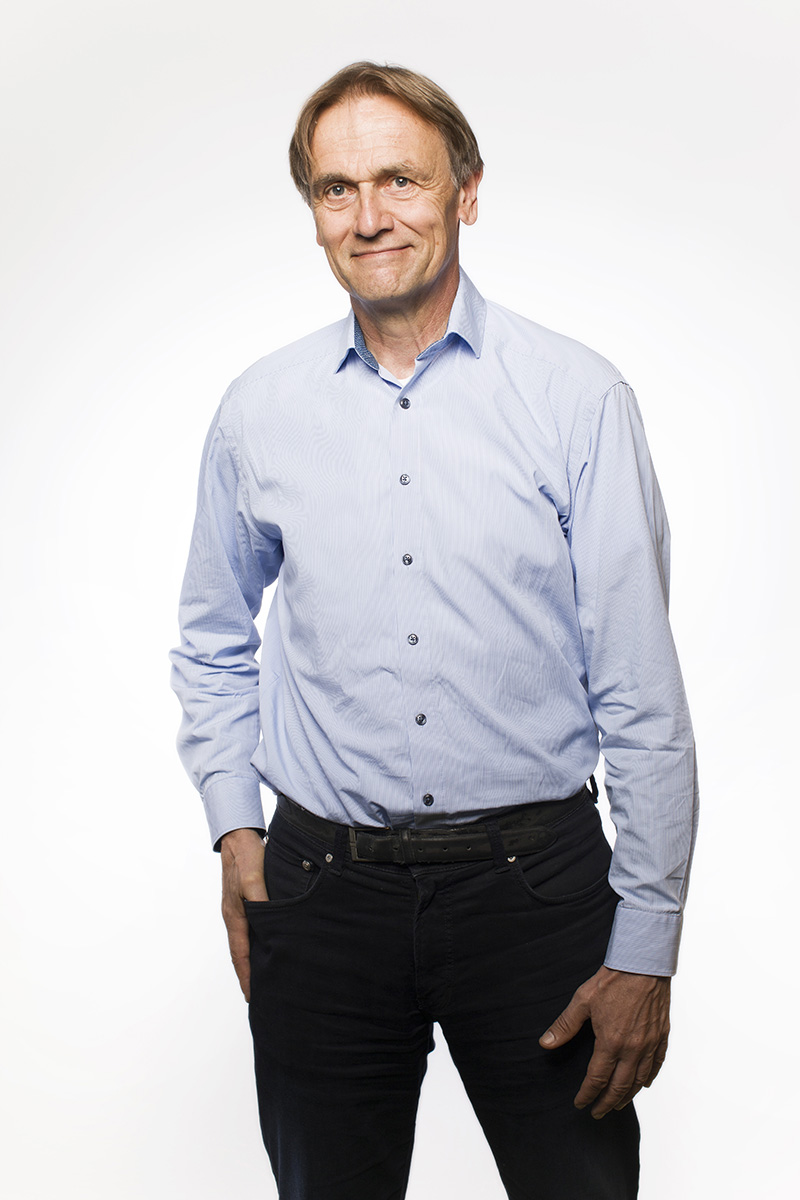
What Works to Improve A2J 2. Not just more legal advice and access to courts.
This second blog post in the series considers how we should respond to evidence that just improving access to lawyers and courts is unlikely to improve A2J.
The effects of using justice sector institutions
In the first blog in this series, an A2J variable was constructed and I began analyzing the World Justice Project (WJP) dataset for 101 countries. We found: (1) Making more people agree seems to be a promising strategy to bridge the justice gap. (2) People doing what other people ask for also resolves a huge number of justice problems, but increasing this number requires more thought. We now turn to self help, taking advice, assistance from lawyers and going to court.
Few people take advice
In most countries, only a few people ask for advice (28% average country score). If they take advice, they often get it from friends/family (52%). Lawyers or professional advice services (29%), government advice services (10%) and court/government body/the police also deliver advice (10%).
More people getting (legal) advice does not correlate with better A2J
Does getting advice help? Many access to justice policies, such as civil legal aid, are based on this premise. Strangely enough, countries with more people seeking advice do not have better A2J (corr. -0.02). Whether more people go to lawyers or professional advisers, does not make a difference either. The positive correlation with A2J is still not there (-0.07). The same is true for more people going to a government legal aid office (-0.06). More people getting legal advice does not seem to lead to more people getting fair solutions. What is going on here?
More people going to courts for decisions does not increase the A2J score
Then what about courts. Problems that are done with are seldom settled by a decision or intervention by a court or a formal authority. The country average is 3.1% (P20=1.7%; P80=4.4%). A2J is not better in countries having more people settle their problem through a court or tribunal (corr. – 0.15). A strategy of having more people address the court is also not recommended by the data. Countries having more people who at some stage address an authority to adjudicate, mediate or solve the problem have no higher score on A2J (-0.04). These are really troublesome results, given that most justice money is spent on court procedures or navigating them (legal aid).

Some lawyers and courts may still be very helpful
If there is no correlation, this is not so good, but effects may cancel out. Some people may be helped to solve their problem, because of legal advice or a judgment. Others may end up in a more complicated process, or a more strained relationship. Lawyers and courts may also be involved in problems that are more difficult to solve anyhow. A rough multivariate analysis of this suggests that in countries where hardship is common, more people in court may increase A2J. But in countries where hardship is less common, more people in courts may even have a detrimental effect.
Reasons why people do not get advice or decisions should make us think
The reasons why people do not take advice or ask for decisions are revealing. Most people not taking advice did not think the problem was difficult (58%). People do not go to judges, mediators or authorities because the problem was not important enough or easy to resolve (30%). Or because they were confident they could resolve the problem by themselves (26%).
Easy to resolve and confidence correlate with A2J
You may think people are overly confident. Do they really understand what they are doing?
Interestingly, when many people find the problem easy, A2J is better (correlation 0.50). Not important or easy to resolve (0.41) and confidence (0.25) correlate moderately with A2J.
So the intuition of some politicians to improve self-help is supported by this data. Which of course doesn’t say everybody is capable to solve problems by themselves.
Just improving access to lawyers and courts is unlikely to work
Empowering people, whatever their capabilities, does seem to be a way forward. In particular, making them agree. “The process was fair” also correlates with A2J (0.41). So empowering people to agree through a fair and easy process is an attractive option.
Just improving access to lawyers and courts, without looking at how they work and on what type of cases, is unlikely to improve A2J. In a world where most public access to justice money is spent on courts, prosecution, legal aid and government legal advice offices, these results are troubling. There is indeed an elephant in the court room.
Access to justice needs a fundamental redesign
Reports by the OECD, the Task Force on Justice and HiiL call for a fundamental redesign. Focus on problems as people experience them, map current processes, redesign the procedures so they become more user-friendly, work evidence-based and monitor outcomes. That is at the core of their recommendations. The new data point in the same direction. In the next blog, we turn to the barriers to access to justice as experienced by people seeking access to justice. What can we learn from them?


